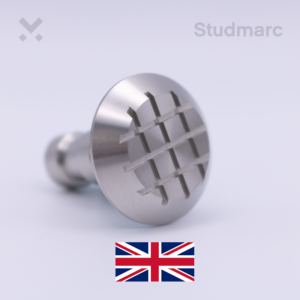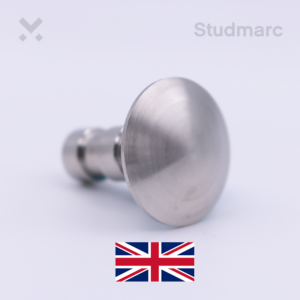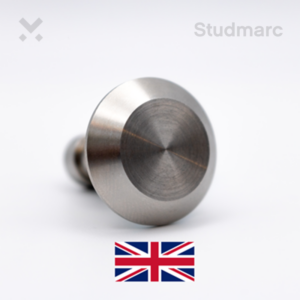Retrofitting tactile studs utilising worn tactile paving
An eco alternative
Over time concrete blister paving wears down and chips away as the amount of footfall it sees increases. Eventually, all that’s left is a buff or red paving tile serving very little purpose other than having a contrasting colour with the surrounding paving. This becomes an issue because the blisters then become imperceptible to the blind and visually impaired, creating a hazard at key crossing points.
Ordinarily, this would require the old paving to be exhumed and replaced with new blister paving causing disruption and potentially the rerouting of traffic for the surface to be dug up. This incurs a cost in both time and money for local councils. There is however a better solution that is more environmentally friendly, longer lasting than traditional concrete blister paving, and more time and cost-efficient…retrofitting tactile studs.
Retrofit for the future
The most environmentally friendly thing we can do in most situations is to do nothing, but when safety is a key concern, we still need to act. Retrofitting is a great solution to most issues as it allows us to add to the environment without modifying it or changing it to a large degree, particularly when it comes to our substrate. Then combine retrofitting with a long-term, durable solution and we reach peak sustainability.
In the case of replacing concrete blister paving, there is the issue of tearing up the pavement. This involves:
- Petrol or electric-powered machinery throwing dust and contaminants into the air
- Rerouting traffic, lengthening their journey and idle times
- The use of powered ad-hoc traffic lights and signals
- Deliveries of concrete slabs made by wagons as they can’t travel by traditional courier
- The need for multiple vans and workpeople to attend a site
- Having to redo it again years down the line when they’ve worn down once again
All these seemingly minor actions result in a heavy accumulation of carbon, and something we don’t think very much about or their effects.
Why retrofit tactile studs?
Tactile studs are the ideal retrofit solution in situations such as these due to their inherent properties. They provide all the positives of concrete blister paving with much less in the way of installation time, disruption, and carbon cost. By installing them into the existing blister paving, plain steel tactile studs are still able to utilise the surrounding colour to provide that much-needed contrast for the visually impaired.
The installation itself only requires a single individual with a drill and a tube of resin. The holes are drilled into where the previous blisters were, and the tactile studs are secured using resin and they’ll set in a matter of hours. Due to their solid metal construction, they won’t wear down underfoot and will outlast concrete blister paving by some margin. In the event that one should come loose, it can simply be reinserted and secured once again with resin, without the need to replace the whole slab.
The benefits of retrofitting tactile studs:
- Installed with a battery-powered drill and a tube of resin
- No disruption to traffic or pedestrians
- No need for traffic control lights
- Can be transported by courier
- Only one individual is needed for installation
- They last a great deal longer than concrete alternatives
Using the existing terrain and simply adding tactile studs rather than replacing the blister paving tiles vastly reduces carbon emissions and associated costs.



